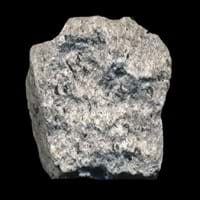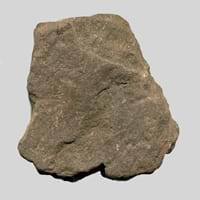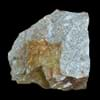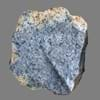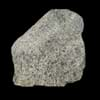Porphyry and Shale
Definition
Definition
Porphyry is a reddish-brown to purple igneous rock containing large phenocrysts of various minerals embedded in a fine-grained matrix
Shale is a fine-grained sedimentary rock which is formed by the compaction of silt and clay-size mineral particles
History
Origin
Egypt
Unknown
Discoverer
Unknown
Unknown
Etymology
From Old French porfire, from Italian porfiro and in some cases directly from Latin porphyrites
From German Schalstein laminated limestone, and Schalgebirge layer of stone in stratified rock. From Old English scealu in its base sense of- thing that divides or separate,
Class
Igneous Rocks
Sedimentary Rocks
Sub-Class
Durable Rock, Hard Rock
Durable Rock, Medium Hardness Rock
Family
Group
Plutonic
Not Applicable
Other Categories
Fine Grained Rock, Opaque Rock
Fine Grained Rock, Opaque Rock
Texture
Texture
Porphyritic
Clastic, Splintery
Color
Black, Brown, Colourless, Green, Grey, Red, Rust, White
Black, Brown, Buff, Green, Grey, Red, Yellow
Maintenance
Less
More
Durability
Durable
Durable
Water Resistant
No
No
Scratch Resistant
Yes
No
Stain Resistant
Yes
No
Wind Resistant
No
No
Acid Resistant
Yes
No
Appearance
Dull
Muddy
Uses
Architecture
Interior Uses
Decorative Aggregates, Interior Decoration
Decorative Aggregates, Homes, Interior Decoration
Exterior Uses
Garden Decoration, Paving Stone
As Building Stone, As Facing Stone, Office Buildings
Other Architectural Uses
Curbing
Curbing
Industry
Construction Industry
Construction Aggregate
Cement Manufacture, Construction Aggregate, for Road Aggregate, Making natural cement, Raw material for the manufacture of mortar
Medical Industry
Not Yet Used
Not Yet Used
Antiquity Uses
Artifacts, Monuments, Sculpture
Artifacts, Sculpture
Other Uses
Commercial Uses
Creating Artwork, Gemstone, Jewelry
Creating Artwork, Pottery
Types
Types
Rhomb Porphyry
Red Shale, Black Shale, Green Shale, Grey Shale and Yellow Shale
Features
Generally rough to touch, Is one of the oldest rock, Surfaces are often shiny
Easily splits into thin plates, Generally rough to touch, Very fine grained rock
Archaeological Significance
Monuments
Used
Used
Famous Monuments
Data Not Available
Jantar Mantar in India
Sculpture
Used
Used
Famous Sculptures
Data Not Available
Data Not Available
Pictographs
Not Used
Used
Petroglyphs
Not Used
Used
Figurines
Used
Used
Fossils
Absent
Present
Formation
Formation
Porphyry is formed in two stages: the magma cools slowly deep within the crust or the magma is cools rapidly as it erupts from a volcano, creating small grains that are usually invisible to naked eye.
Shale forms when very fine-grained clay particles are deposited in water which settle at the bottom of water bodies. They are later compacted hence forming shale.
Composition
Mineral Content
Biotite, Chert, Feldspar, Garnet, Graphite, Quartz, Silica
Albite, Biotite, Calcite, Chert, Chlorite, Dolomite, Hematite, Micas, Muscovite or Illite, Pyrite, Quartz, Silica, Sulfides
Compound Content
Aluminium Oxide, CaO, Iron(III) Oxide, Potassium Oxide, MgO, Sodium Oxide, Silicon Dioxide, Titanium Dioxide
Ca, Fe, Mg, Silicon Dioxide, Sodium
Transformation
Metamorphism
Yes
No
Types of Metamorphism
Burial Metamorphism, Cataclastic Metamorphism, Contact Metamorphism, Hydrothermal Metamorphism, Impact Metamorphism, Regional Metamorphism
Not Applicable
Weathering
Yes
Yes
Types of Weathering
Biological Weathering, Chemical Weathering, Not Registered
Biological Weathering, Chemical Weathering, Mechanical Weathering
Erosion
Yes
Yes
Types of Erosion
Chemical Erosion, Coastal Erosion, Glacier Erosion
Chemical Erosion, Coastal Erosion, Glacier Erosion
Properties
Physical Properties
Hardness
6-7
3
Grain Size
Fine Grained
Very fine-grained
Fracture
Irregular
Not Available
Streak
White
White
Porosity
Less Porous
Highly Porous
Luster
Dull
Dull
Compressive Strength
Not Available
95.00 N/mm2
20
Cleavage
Imperfect
Slaty
Toughness
1.7
2.6
Specific Gravity
2.5-4
2.2-2.8
Transparency
Translucent to Opaque
Opaque
Density
2.5-2.52 g/cm3
2.4-2.8 g/cm3
Thermal Properties
Specific Heat Capacity
Not Available
0.39 kJ/Kg K
23
Resistance
Heat Resistant, Impact Resistant
Heat Resistant, Impact Resistant
Reserves
Deposits in Eastern Continents
Asia
China, Kazakhstan, South Korea, Thailand, Turkey, Vietnam
Bangladesh, China, India, Russia
Africa
Egypt, Ethiopia, Ghana, South Africa
Ethiopia, Kenya, Morocco, South Africa, Tanzania
Europe
Finland, France, Germany, Great Britain, Hungary, Iceland, Ireland, Italy, Netherlands, Norway, Romania, Sweden, Switzerland
Austria, France, Germany, Greece, Italy, Romania, Scotland, Spain, Switzerland
Others
Greenland
Not Yet Found
Deposits in Western Continents
North America
Canada, Cuba, Jamaica, USA
USA
South America
Bolivia, Brazil, Colombia, Ecuador, Paraguay
Bolivia, Chile, Colombia, Ecuador, Peru, Venezuela
Deposits in Oceania Continent
Australia
New South Wales, New Zealand, Western Australia
New South Wales, New Zealand, Queensland, Victoria, Western Australia
All about Porphyry and Shale Properties
Know all about Porphyry and Shale properties here. All properties of rocks are important as they define the type of rock and its application. Porphyry belongs to Igneous Rocks while Shale belongs to Sedimentary Rocks.Texture of Porphyry is Porphyritic whereas that of Shale is Clastic, Splintery. Porphyry appears Dull and Shale appears Muddy. The luster of Porphyry and Shale is dull. Porphyry is available in black, brown, colourless, green, grey, red, rust, white colors whereas Shale is available in black, brown, buff, green, grey, red, yellow colors. The commercial uses of Porphyry are creating artwork, gemstone, jewelry and that of Shale are creating artwork, pottery.
|
||
|
||
|
